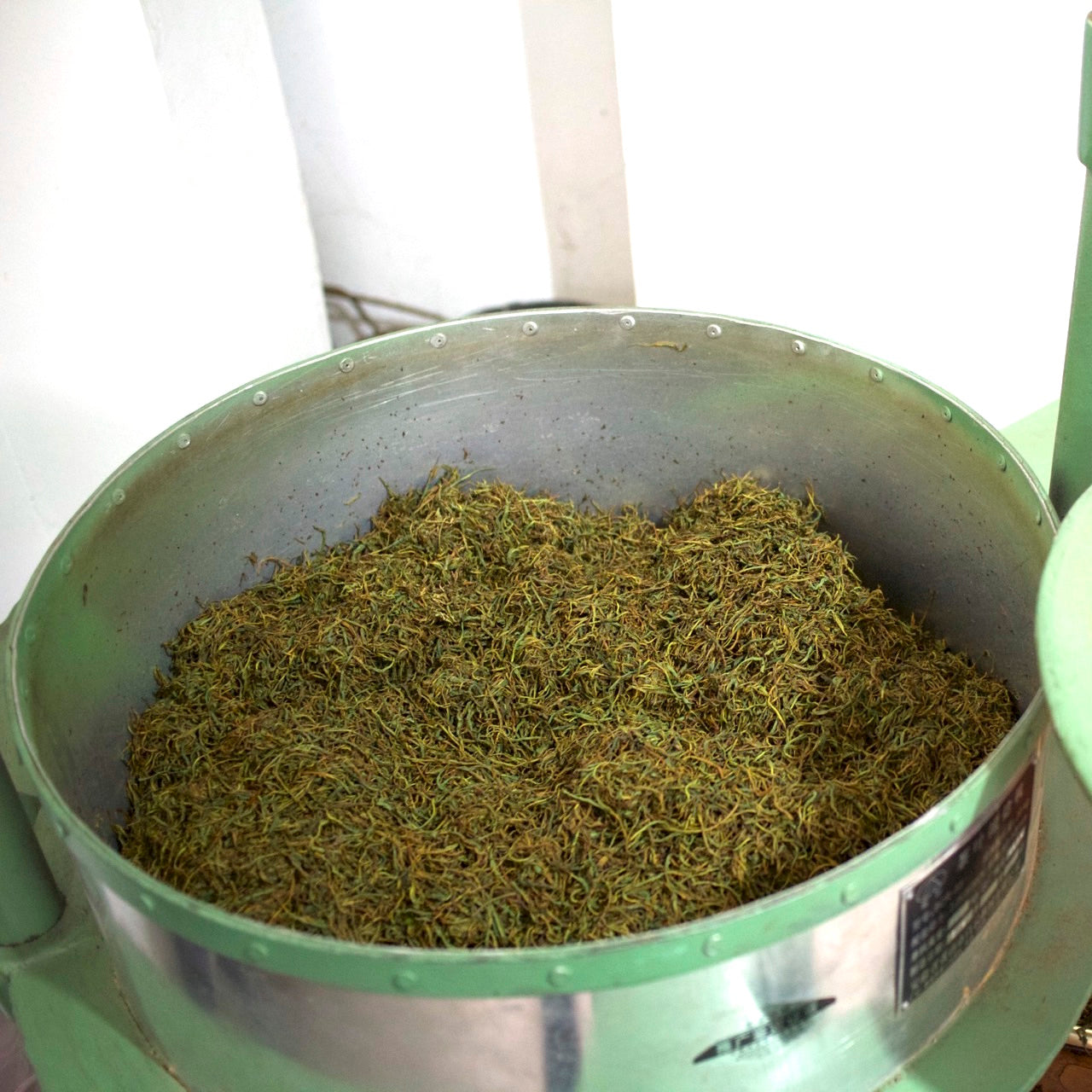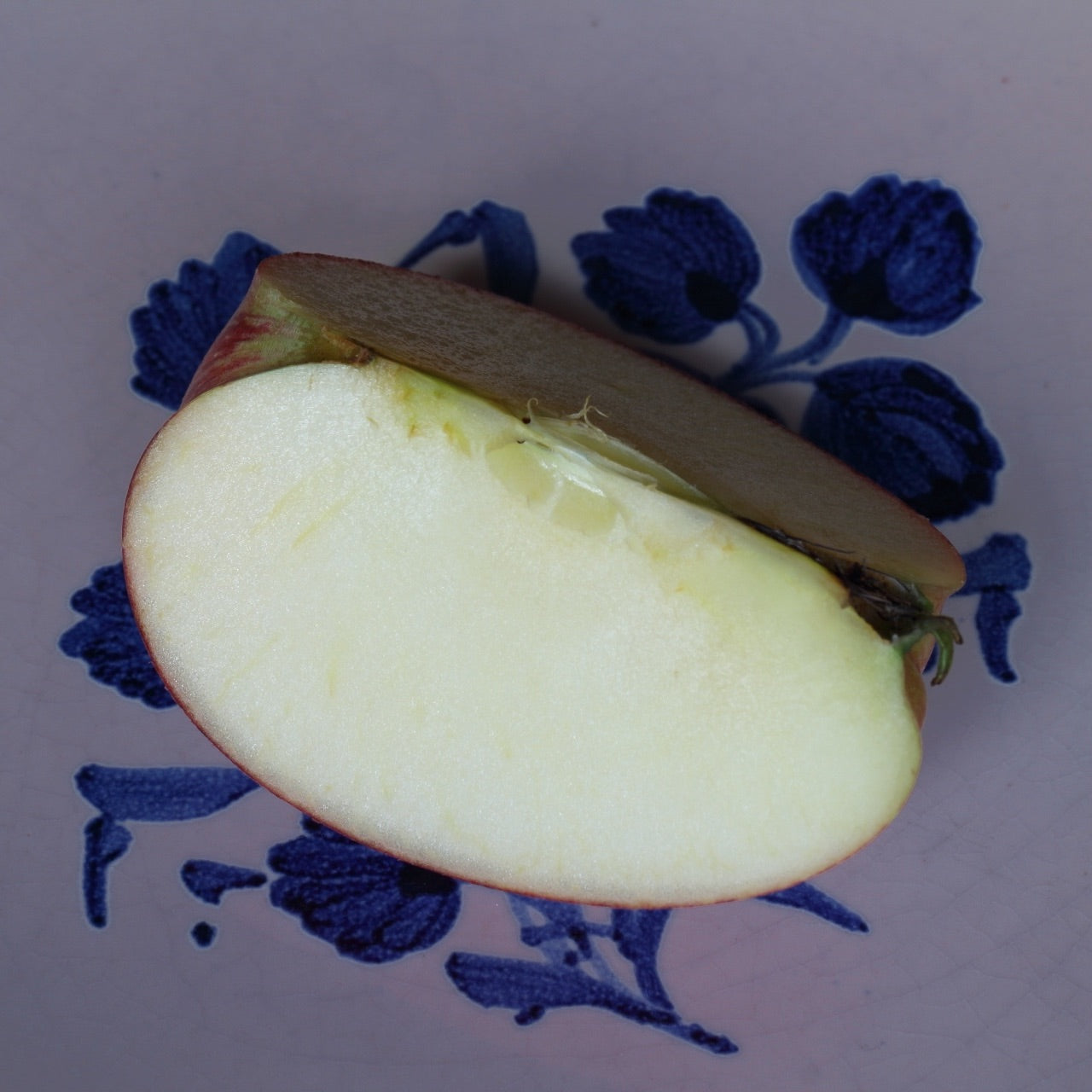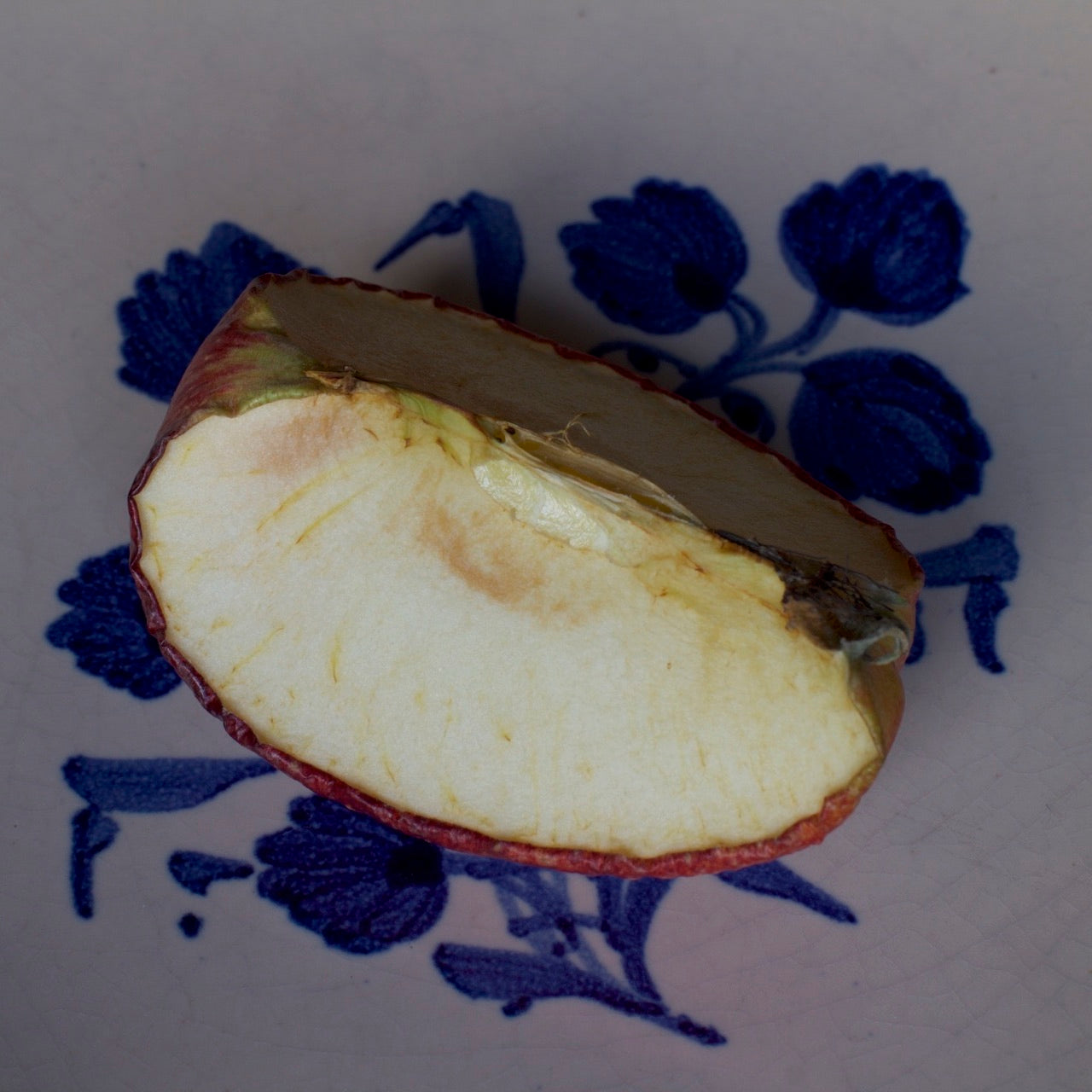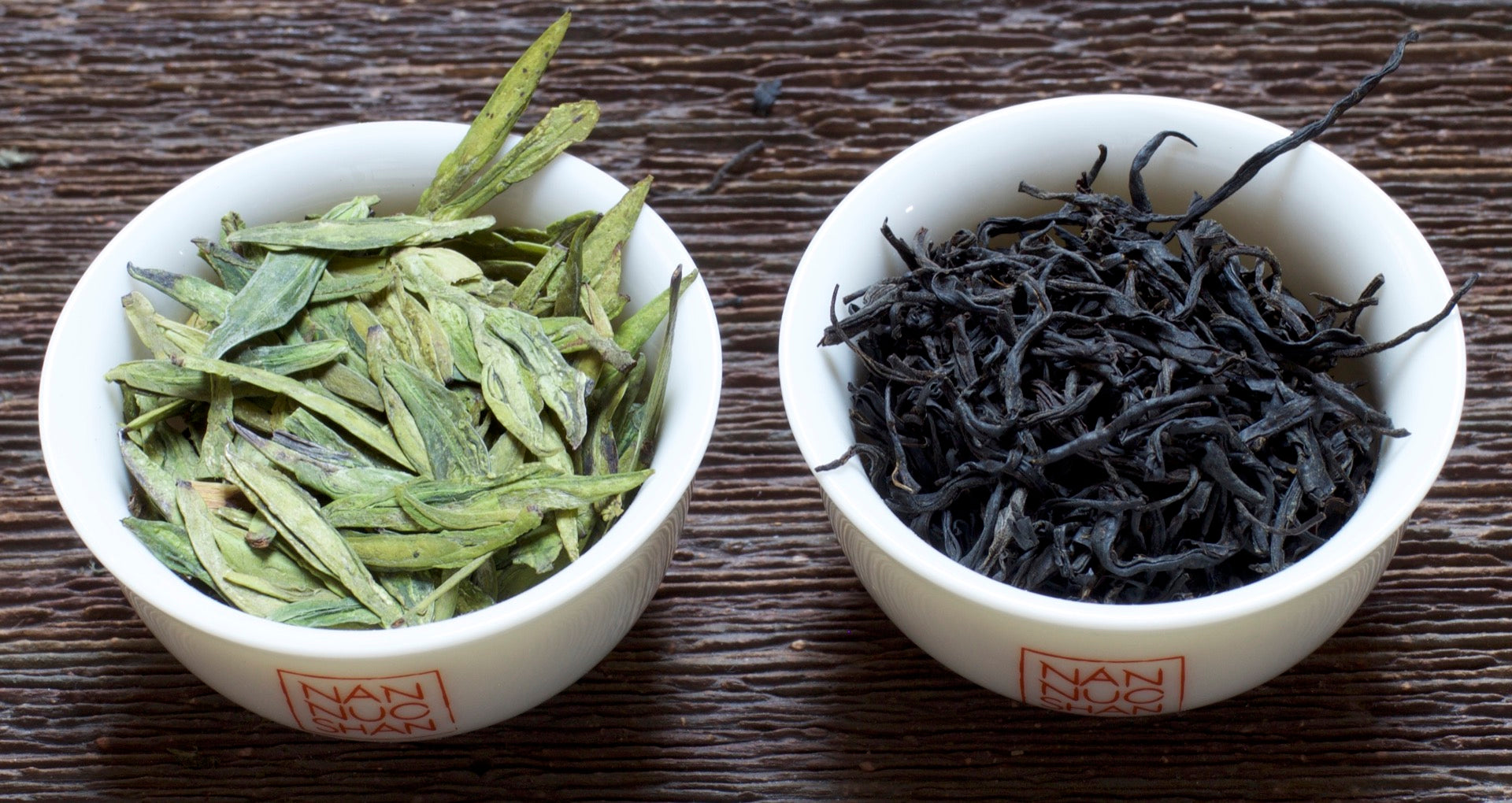Difference between green and black tea
Obviously red grapes make red wine and white grapes make white wine. And we all know there are apple trees giving red apples and those giving green apples. But all tea trees have green leaves, without exceptions!
What transform the tea leaves
into a black tea?
The answer is air.
After the harvest, the leaves are disposed in wide bamboo baskets and left withering for many hours. In contact with air, the leaves begin to change color. After withering they are rolled and moved in a warm room or in a small greenhouse. Here their aspect change even faster and within a few hours they are completely brown-reddish.


Green leaves turn brown-reddish after having been exposed to air (oxidation).
The leaves have interacted with the air turning darker. This phenomenon is called oxidation and is exactly what happens to a slice of apple if you leave it in the plate for a few hours.


Like an apple, also tea leaves turn darker if exposed to air.
For producing green tea, oxidation is prevented by heating them up right after the harvest; for example frying them in a wok or baking in a oven. The heat stops the oxidation before it even starts preserving the fresh, green color of the leaves.

Green and black tea produced from plants of the same tea garden, by the same farmer in the same season.
Although, like in the photos above, the difference between green tea and black tea can be limited the processing, there are many other factors that shall not be neglected.
Each tea is the result of a unique combination of plant variety, leaf size, weather, soil, season and processing.

On the left, a spring black tea from Yunnan, a subtropical province in the south west of China, done with buds of big leaf trees. It tastes completely different than the tea shown on the right; a spring black tea from the East of China, obtained from open leaves of small leaf tea bushes.
Cultivar, leaf size, weather,
soil and harvest season
all influence the taste of the tea
Tea is born from the interaction between nature and human. Over the years, farmers have adapted their processing methods to the nature of the leaves, refining their skill to improve the taste of their tea. Especially in recent years, farmers and laboratories also experiment unusual combination of leaves and processing, in search for new, unknown flavors.
Optimizing and experimenting
new processing techniques
are crucial to continuously improve
the quality of tea
While it is certainly correct that leaf oxidation is what differentiate a green tea from a black tea, we should not forget that the plant variety, the environment in which the it grows, the harvest conditions and the processing methodology and skills play a major role in the appearance and flavor of a tea.
Written by Gabriele





